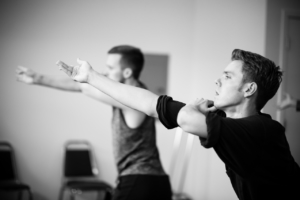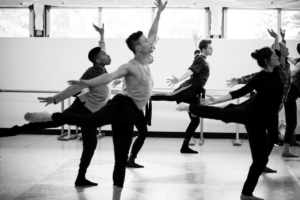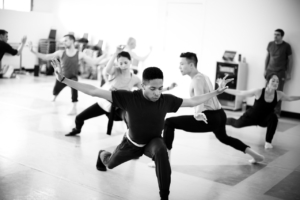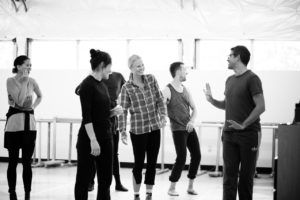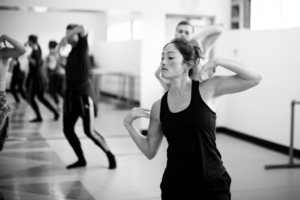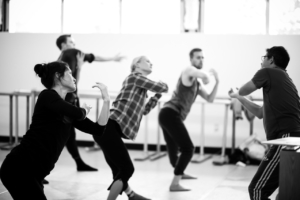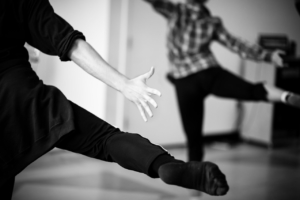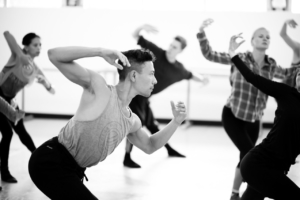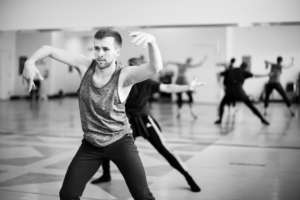How The Background Hum of Stimuli came to fruition shows once again the way unexpected setbacks or a new source of inspiration can lead in surprising directions. Originally, when Bruno Roque received his CHOREOGRAPHIC SHINDIG III commission (along with Adam Barruch and Banning Bouldin), he had quite a different sort of piece in mind, a rather solemn homage to jazz. Bruno had discovered jazz “rather late,” he says, but listened to, watched, read and researched about it and documented it, until he came away with “incredible respect and admiration” for ” the only truly American art form.”
He was especially by impressed its democratic approach, pointing to the after-hours jam sessions black and white musicians would hold together, back in the era when players and audience were strictly segregated in public. “Jazz musicians,” Bruno says, “were a step ahead.” He had long wanted to choreograph to jazz, only once he got started, “I was a bit overwhelmed. I wanted to make jazz proud, but wasn’t sure I could.”
In the meantime, as in a novel where alternating chapters feature different plot lines, another notion was percolating in Bruno’s mind. He found the dependence that he and others around him had on cell phones very annoying. “I was frustrated by how my phone was controlling and messing with my life. It’s got all the characteristics of an addiction.” Any choreography on the subject needed to be layered, though. “These are actually quite serious matters, but I wanted to talk about it in a very light and funny way. I love theatricality. I’m a great fan of Pina Bausch.”
As he toyed with 2 such different themes and moods—doing research on the effects of our cellphone addiction, “listening to TED talks etc, and working on the jazz piece—thematically, it began to come together. I was led to the idea of a digital diet. Let’s put those phones down and dance! It was all quite developed, including maybe half the jazz section.”
Bruno had seen Whim W’Him dancers in action several times already. “They are movers. They can understand. They get it with little explanation on my part. We didn’t need to play catch-up, and I didn’t have to hold back.” But at this point, Bruno says honestly, “I was still too much of a dancer myself.” Dancers are always facing mirrors and thinking about their bodies. “I needed to get out of the realm of my own physicality and adapt to theirs.”
It was just at this moment that the setback necessary to any good plot occurred: He sprained his ankle. A fairly radical change of approach was in order.
Once Bruno had worked with a choreographer who would record an improvisation session, then extract random movements and cut and paste a collage from it. Because of his injury and despite his reservations, he decided to take a step in that direction and put his trust in the dancers. “On the last day of last week, we had a long improv. They’re very capable of it. With them I knew we could do it. I had been skeptical at the beginning, but it came out very well.”
He continues, “All the rest of it in that jazz part is theirs now. I just repurposed or changed or modified it a little. It went from my own physicality leading the process to theirs. And it felt fitting. Jazz is a conversation, spontaneous though structured, where individuality is honored for the sake of the group.”
You’ll be surprised and amused at how this piece ends…
Photo credit: Bamberg Fine Art Photography
